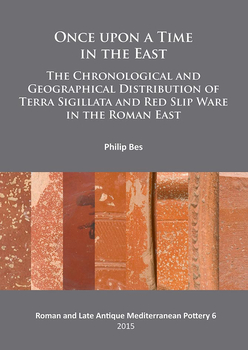Inventory of Crafts and Trade in the Roman East (ICRATES): database of tableware
Philip Bes, Rinse Willet, Jeroen Poblome, Tom Brughmans, 2019. https://doi.org/10.5284/1050900. How to cite using this DOI
Data copyright © Dr Philip Bes, Dr Rinse Willet, Prof Jeroen Poblome, Dr Tom Brughmans unless otherwise stated
This work is licensed under the ADS Terms of Use and Access.
Primary contact
Dr
Tom
Brughmans
University of Oxford
School of Archaeology
1 South Parks Road
Oxford
OX1 3TG
United Kingdom
Resource identifiers
- ADS Collection: 3268
- DOI:https://doi.org/10.5284/1050900
- How to cite using this DOI
Introduction
The ICRATES database currently includes 33939 diagnostic tableware sherds dated to the Late Hellenistic and Roman periods from 275 excavations and selected surveys throughout the Eastern Mediterranean (and a few sites beyond). The database aims to provide an open online comprehensive dataset of tableware evidence from the Roman East and this current version represents the majority of published information up to 2012 (it represents a snapshot of information that reflects the project’s data collection strategy and research aims, see Bes 2015 for a detailed description). It constitutes a key open resource for the study of the production, distribution and consumption of Hellenistic and Roman tableware in the Roman East and for the study of the Roman economy more broadly.

Distribution map of sites and surveys from which tableware evidence is included in the database. A few additional sites are included from the Western Mediterranean and further east up to India. Background map © Pelagios.
Tableware data of the following major wares with established typologies and chronologies is included: Eastern Sigillata A (ESA), Eastern Sigillata B (ESB), Eastern Sigillata C (ESC) / Çandarli ware, Eastern Sigillata D (ESD), Italian Sigillata (ITS), African Red Slip Ware (ARSW), Cypriot Red Slip Ware (CRSW), Phocaean Red Slip Ware (PRSW). The latter two wares (being recognised as one of multiple typologically related wares in a regional production) are increasingly referred to as Late Roman D (LRD) and Late Roman C (LRC) respectively. In addition, the database includes a large number of other wares with a less widespread distribution in the Roman East.
The database includes published information on the shape and decoration of each sherd, as well as a critical evaluation where possible by ICRATES team members of the typological identification. The site or survey where the sherd was recovered is recorded, including its geographical coordinates and references to the place in the Barrington Atlas and Pleiades where possible. Detailed published information on the archaeological deposit where the sherd was excavated or found is included, as is the bibliographical reference to where each sherd was published.
The first version of the database and the majority of data entry was performed in the framework of Philip Bes’ PhD research. When citing this online database, please also cite the following publication:
Bes, P., 2015. Once upon a Time in the East. The Chronological and Geographical Distribution of Terra Sigillata and Red Slip Ware in the Roman East. Roman and Late Antique Mediterranean Pottery 6. Archaeopress, Oxford.

The main scientific reference work to consult regarding the ICRATES database: Bes, P., 2015. Once upon a Time in the East. The Chronological and Geographical Distribution of Terra Sigillata and Red Slip Ware in the Roman East. Roman and Late Antique Mediterranean Pottery 6. Archaeopress, Oxford. Cover design © Archaeopress and Philip Bes 2015.
The project was funded by:
FWO research projects G.0152.04 and G.0245.02
Research Foundation Flanders - FWO
Egmontstraat 5, 1000 Brussel, Belgium
and
Project GOA 02/02
Research Policy University of Leuven. Belgian Programme on Interuniversity Poles of Attraction (IUAP/V)
initiated by the Belgian Federal Science Policy Office, and the Concerted Action of the Flemish Government
Egmontstraat 5, 1000 Brussel, Belgium







